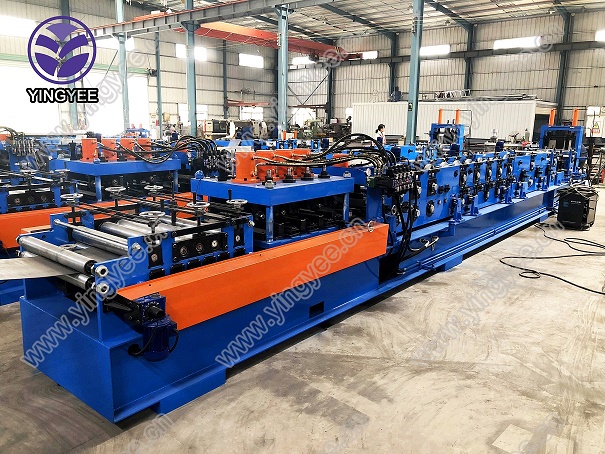Gutter Forming Machine An Overview
In the world of construction and manufacturing, gutter forming machines have become an essential tool for producing high-quality rain gutters. These machines are designed to streamline the process of creating gutters, which play a crucial role in protecting buildings from water damage. This article delves into the features, advantages, and applications of gutter forming machines.
What is a Gutter Forming Machine?
A gutter forming machine is a piece of equipment specifically engineered to shape metal coils into seamless gutters. Typically fabricated from materials like aluminum, steel, or copper, these gutters are vital for directing rainwater away from roofs and foundations, thus preventing potential water-related damages. Gutter forming machines can vary in size and complexity, ranging from portable units suitable for small-scale projects to larger, automated systems designed for mass production.
Features of Gutter Forming Machines
Modern gutter forming machines come equipped with a range of features that enhance their efficiency and functionality. One of the most important features is their ability to produce seamless gutters. Traditional gutter installation often required joining multiple pieces, which could lead to leaks over time. In contrast, gutter forming machines create a continuous length of gutter, significantly reducing the risk of leakage.
Another notable feature is the capacity for customization. Many machines allow users to adjust the size and shape of the gutters to meet specific project requirements. This flexibility is invaluable for contractors, as it enables them to cater to a variety of architectural designs and client preferences. Additionally, these machines often include digital controls for easy operation, which can enhance production speed and accuracy.
Advantages of Using Gutter Forming Machines

The utilization of gutter forming machines offers several advantages. First and foremost, they improve efficiency. By automating the gutter production process, these machines can produce a large volume of gutters in a relatively short time, which can significantly reduce labor costs and increase profitability for contractors.
Moreover, the quality of the finished product is generally superior when produced by a gutter forming machine. The seamless design acquired through the machine's precision reduces the likelihood of bends, twists, or imperfections that can occur with manual fabrication methods. High-quality gutters are not only aesthetically pleasing; they also boast better durability and function.
Furthermore, gutter forming machines contribute to sustainability efforts. By utilizing metal coils instead of traditional wood or plastic materials, the production of gutters results in less waste. Additionally, metal gutters are recyclable, aligning with environmentally conscious construction practices.
Applications of Gutter Forming Machines
Gutter forming machines have diverse applications across various sectors. They are commonly used in residential roofing projects, where effective rainwater management is critical. Additionally, commercial and industrial construction projects benefit from these machines, as they often involve larger buildings with more complex roofing systems.
Furthermore, gutter forming machines can be found in metal fabrication shops that serve both local contractors and larger construction firms. The ability to produce customized gutters on demand makes them indispensable in today’s fast-paced construction environment.
Conclusion
In summary, the gutter forming machine is a vital component of modern construction and manufacturing. With its ability to produce high-quality, seamless gutters efficiently and sustainably, it addresses the essential need for effective rainwater management. As the construction industry continues to evolve, the demand for gutter forming machines is likely to grow, further solidifying their place as an indispensable tool for contractors and builders alike.